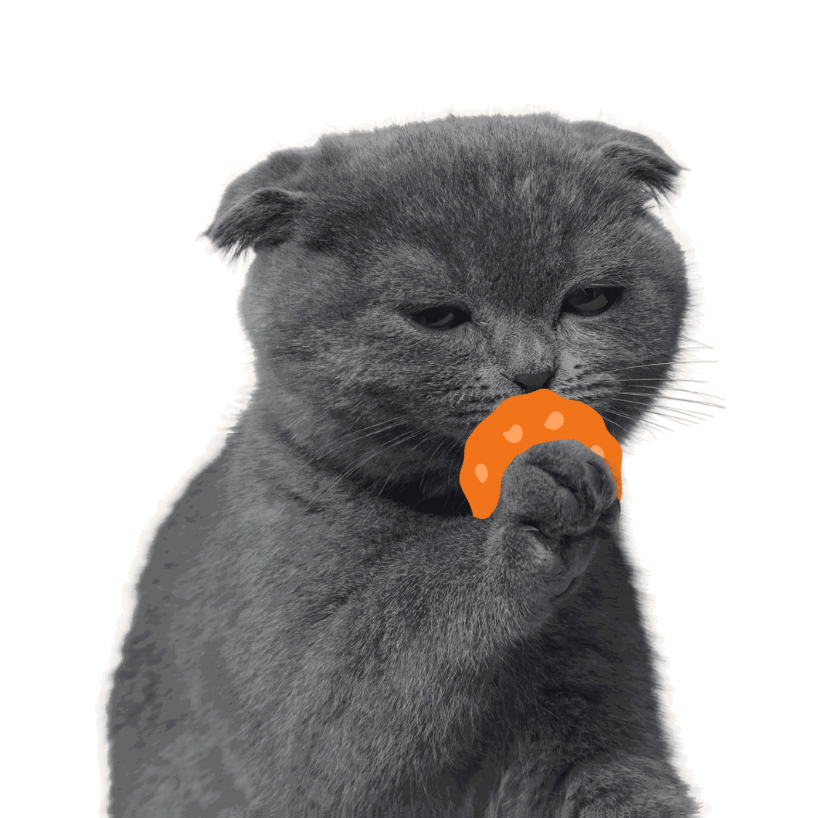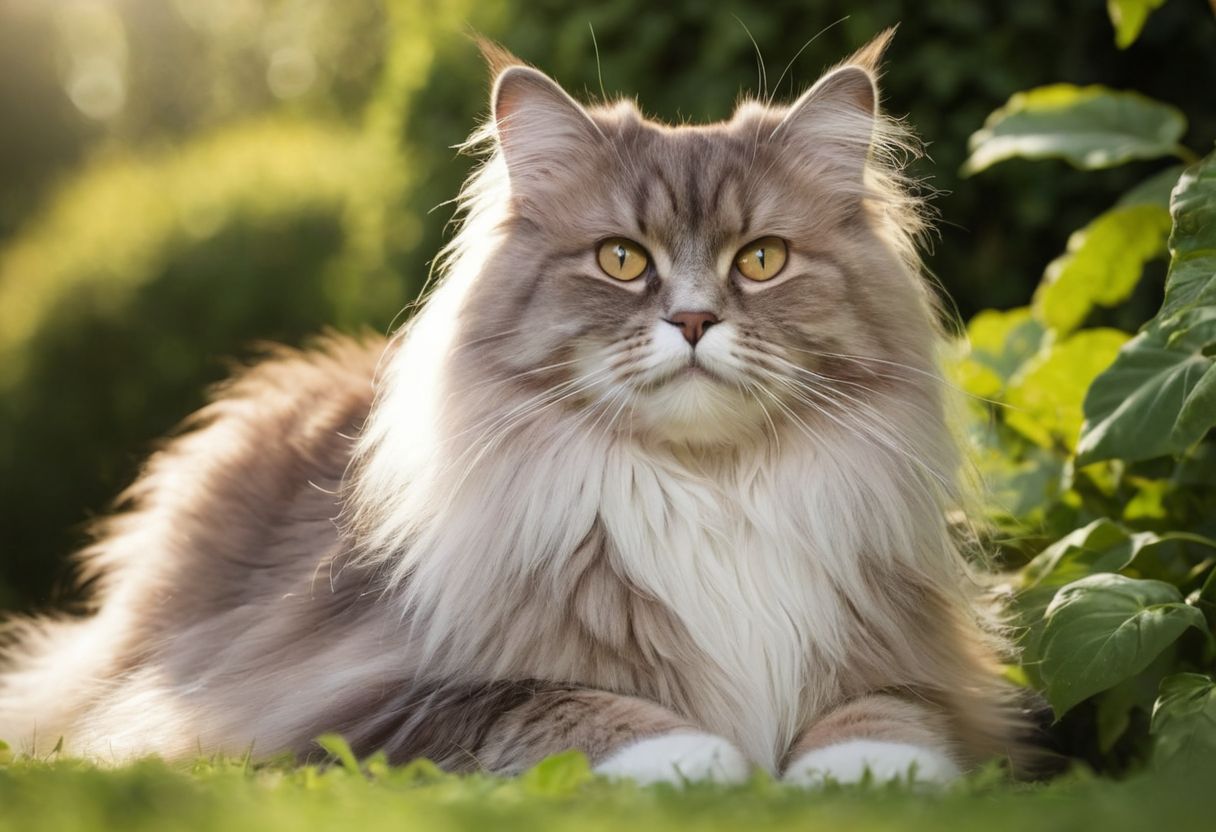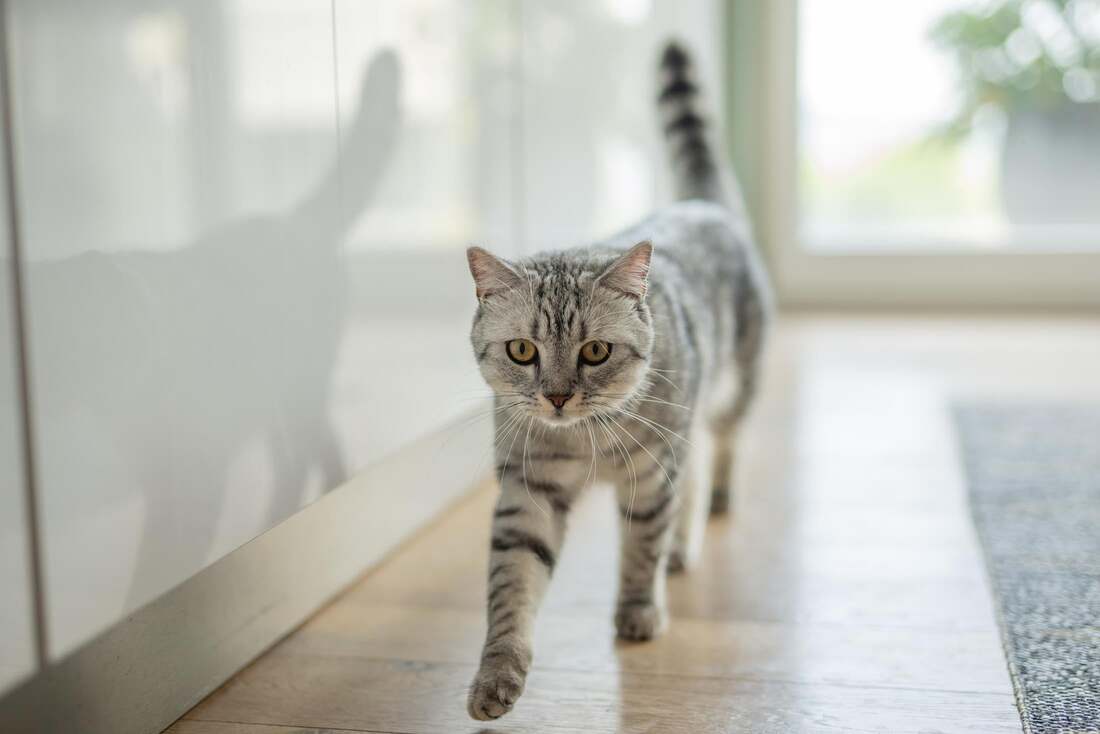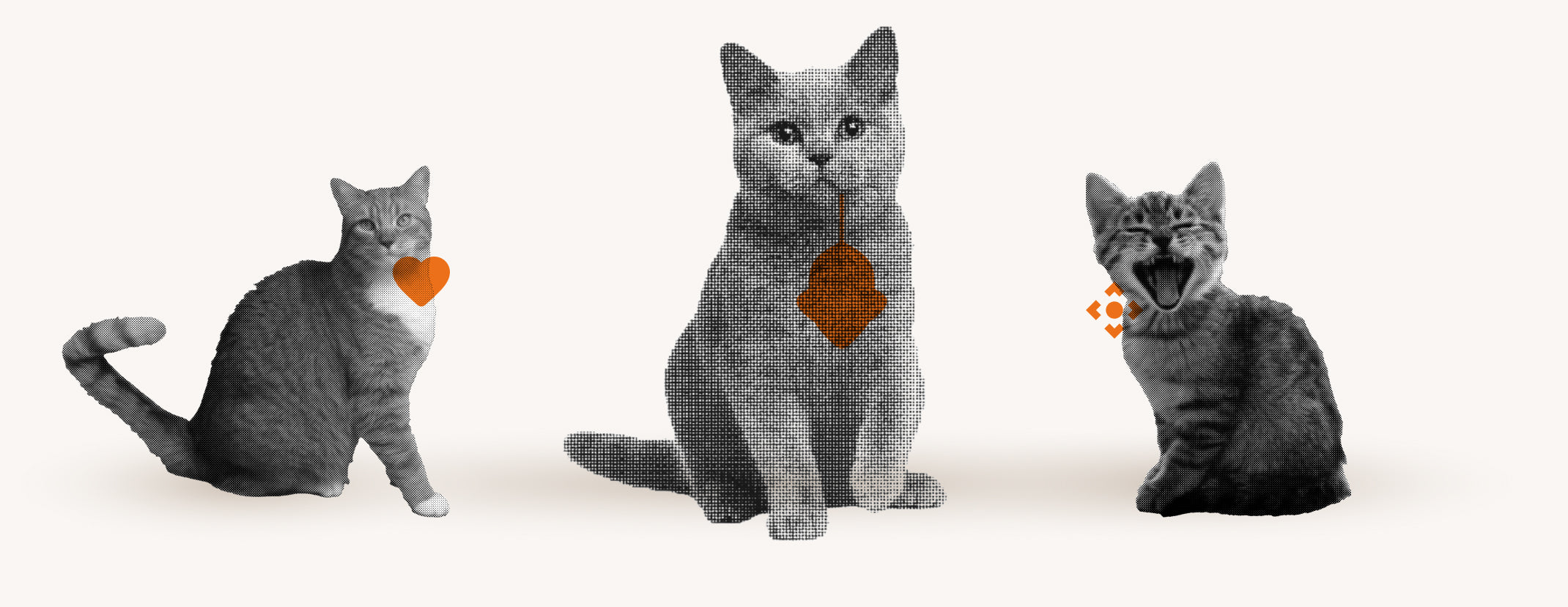Have you ever wondered why BKH longhair cats are so special?
Their unique combination of plush fur, gentle character and robustness makes them ideal pets, but knowledge about their care and origins is not always easily accessible.
The British Longhair, also known as the "Highlander", is a variant of the British Shorthair and is characterized by its medium to long coat and its calm, adaptable nature.
In this article you will learn everything about the origin, the characteristic appearance, the character, care tips, health, nutrition and the right breeding choice of BKH long-haired cats in order to deepen your knowledge and ensure the best care for your cat.
Origin and origin of the BKH long-haired cats
The British Longhair cat , often referred to as the Highlander, has its roots deep in British cat breeding history. It originally developed from the British Shorthair , one of the oldest cat breeds, which has been known since 1871. The long-haired variant of this popular breed developed through crossbreeding with Persian cats, which was carried out primarily after the World Wars to refresh the gene pool.
However, this development was not planned. The breeders originally aimed to increase genetic diversity and improve the health of the breed. However, the recessive gene for long fur, which was introduced by Persian cats, meant that long-haired kittens were occasionally born. These were not initially recognized as a separate breed and were often excluded from breeding. Only after enthusiasts for these fluffy variants were found did the targeted breeding of the British Longhair begin.
The History of British Longhair Cats
The history of the British Longhair cat is closely linked to the development of the British Shorthair. After the Second World War had decimated the British Shorthair population, Persian cats were crossed in to preserve the breed. This led to the unintentional introduction of the longhair gene. Over the years, these crosses developed into the British Longhair as an independent breed, which is now valued by cat lovers for its long, soft fur and gentle character.
The characteristic appearance of BKH long-haired cats

The British Longhair cat, often called BKH Longhair for short, immediately stands out due to its luxurious, medium-length to long fur . This dense and plush fur is not only a visual eye-catcher, but also a sign of its noble origins. The fur colors vary from classic black, brown and white to more exotic tones such as cream and silver. A particularly characteristic feature is the well-developed undercoat, which gives the fur additional volume and makes it fluffy.
In addition to their impressive fur, British Longhair cats are characterized by their powerful build. They are medium-sized and muscular, with a broad chest and strong shoulders, which gives them a stocky appearance. Their head shape is round and massive, with a broad skull. The large, round and wide-set eyes, which shine in colors such as copper or dark orange, give the cat an expressive and distinctive look.
The character of the BKH long-haired cats

The British Longhair, often affectionately called BKH Longhair, is known for its cozy and gentle nature . These cats are not only friendly and approachable , but also particularly affectionate towards their owners, with whom they quickly form a deep bond. Their calm nature makes them ideal companions, both for individuals and for families with children or other pets.
In addition to their love and affection, BKH longhair cats also show a playful and curious side . They are intelligent and are easily entertained with toys or interactive games. Here are some typical behaviors:
- They are rather quiet and not very talkative, which means they don't meow much.
- Their curiosity makes them attentive observers of their surroundings.
- Despite their calm nature, they have a playful core and enjoy actively interacting with their humans or other pets.
Care tips for BKH long-haired cats
Proper care for BKH long-haired cats begins with regular grooming. These cats have a dense undercoat and medium-length top coat that can be prone to matting. It is important to brush your cat's coat thoroughly at least once a week. You should use a brush with rounded teeth to gently untangle the coat and not injure the skin. Regular grooming not only helps to keep the coat beautiful and healthy, but also promotes the bond between you and your cat.
In addition to brushing, it is also important to keep an eye on general hygiene. Make sure that your cat's sleeping and resting places are clean and free of hair to avoid skin irritation. During the shedding season, which usually occurs in spring and autumn, it may be necessary to intensify grooming to effectively remove loose hair and undercoat. Regularly checking and cleaning your cat's ears, eyes and teeth should also be part of the routine to optimally support the health of your BKH Longhair.
Health and Disease Prevention in BKH Longhair Cats
The health of British Longhair cats can be affected by some breed-specific problems. One of the most common is hypertrophic cardiomyopathy , a heart disease that thickens the heart muscle. Another serious condition is polycystic kidney disease , which is often seen in this breed. These diseases can significantly affect the cats' quality of life, so it is important to detect them early.
To prevent these health problems or treat them early, regular visits to the veterinarian are essential. Here are some preventative measures:
- Regular cardiac ultrasounds can help detect hypertrophic cardiomyopathy early.
- Annual kidney examinations using ultrasound or blood tests to detect signs of polycystic kidney disease.
- A balanced diet and regular exercise generally support health and can help reduce additional burdens caused by these diseases.
Nutritional tips for BKH long-haired cats
Proper nutrition is crucial for the health of your British Longhair cat. These cats require a balanced diet that is high in protein and low in fat. It is important that you choose high-quality cat food that contains all the essential nutrients. A combination of wet and dry food can be beneficial, as wet food provides the necessary moisture and dry food ensures good dental hygiene. Make sure the food is specifically formulated for the needs of longhair cats to minimize the risk of hairballs.
Here are some specific tips for feeding your BKH longhair cat:
- Make sure the food is high in animal protein, as cats are carnivores.
- Avoid foods with a high grain content as they are harder to digest and do not meet the cat's natural nutritional needs.
- Pay attention to the freshness of the food to ensure your cat gets the best possible nutrients.
These nutritional tips will help you keep your BKH longhair cat healthy and happy.
Breeding and selection of a breeder for BKH longhair cats
When breeding British Longhair cats, also known as BKH or BLH, it is important to choose a reputable breeder. A responsible breeder places great importance on the health and well-being of the animals. They ensure that the cats grow up in a clean and loving environment and that they are well socialized. This means that the cats have positive experiences with people and other animals from an early age. Make sure that the breeder can show you all the necessary health certificates and pedigree papers for the kittens.
If you are interested in a British Longhair kitten, you should consider the following points when choosing a breeder:
- Research : Find out about the breeder online and read reviews from other cat owners.
- Visit : Make a personal appointment to see the breeding facility for yourself and meet the cats.
- Ask questions : Do not hesitate to ask the breeder questions about the animals' health, vaccinations and nutrition.
These steps will help you find a reputable breeder who has the welfare of British Longhair cats in mind.
Buying a BKH long-haired cat: What to consider
If you are thinking about getting a BKH longhair cat, there are a few important points to consider. First, it is crucial that you find a reputable breeder who prioritizes the health and welfare of the cats. The kittens should grow up in a clean and loving environment and be well socialized. This means that they should have had positive experiences with people and other animals early on. Make sure that the breeder can show you all the necessary health certificates and pedigree papers.
You should also make sure that the kittens' parents have been tested for breed-specific diseases. These include diseases such as hypertrophic cardiomyopathy and polycystic kidney disease, which can occur in BKH longhair cats. It is also important that the animals' pedigrees are checked to avoid inbreeding, which could affect the kittens' health. When visiting the breeder, pay attention to the following points:
- The bond between the kittens and the breeder
- The social conditions under which the kittens grow up
- The health certificates and pedigree papers of the kittens
How Flappie keeps your BKH Longhair cat safe and clean
Flappie offers an innovative cat flap that is specially designed to keep your home clean and safe, especially if you have a BKH longhair cat. This smart flap prevents your cat from bringing prey such as birds or mice into the house. Thanks to the integrated camera and AI technology, the flap recognizes whether your cat comes home alone or with prey.
The Flappie cat flap not only offers you a clean environment, but also a high level of security and comfort. Here are some of the advantages:
- Selective access control prevents prey from entering.
- Prey detection through AI-supported camera.
- Remote control and notifications via the Flappie app.
Visit https://flappie.ch to learn more about this innovative solution and how it can improve the life of you and your BKH Longhair cat.
Frequently Asked Questions
What is the difference between British Shorthair and British Longhair?
The main difference between the British Shorthair and the British Longhair is the length of the coat. The British Shorthair has short fur, while the British Longhair, also known as the Highlander, has medium to long fur. This dense and plush coat is characteristic of the British Longhair and distinguishes it from the British Shorthair.
Are British Longhairs cuddly?
Yes, British Longhair cats are known for their cozy and gentle nature. They are not only friendly and approachable, but also particularly affectionate towards their owners, with whom they quickly build a deep bond. Their calm nature makes them ideal companions.





Share:
Tortoiseshell Cat Breed: A Comprehensive Guide
Swedish Cat Breed: A Comprehensive Guide